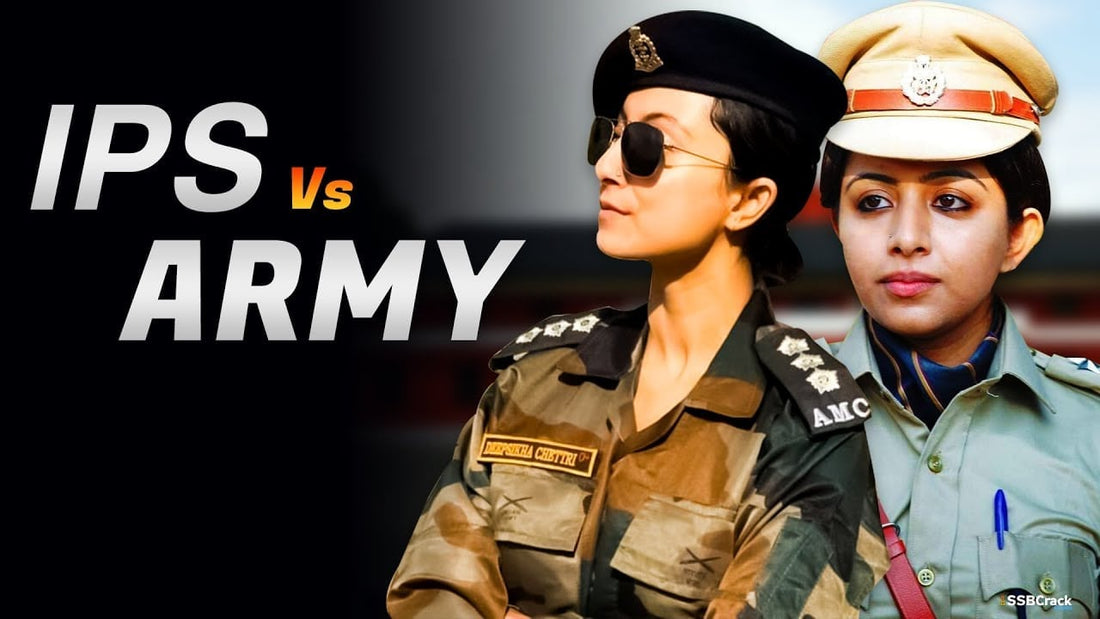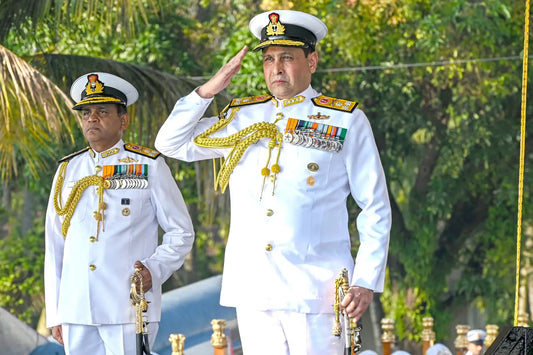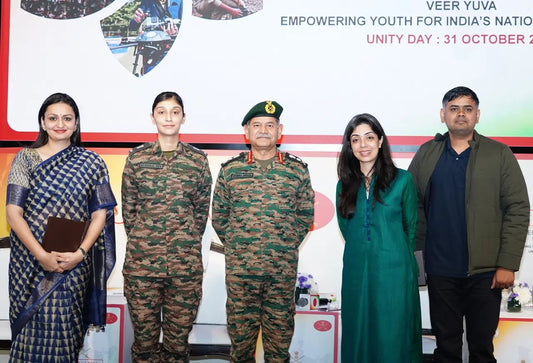Assessing the Power Dynamics Between IPS and Army Officers in India

The power dynamics between the Indian Police Service (IPS) and Army officers in India is a complex subject, reflecting the distinct yet overlapping realms of authority both groups possess. These entities are crucial to India’s security and governance, showcasing their power in different ways. While a superficial glance might suggest a clear hierarchy between these two vital bodies, the reality involves a nuanced interplay of operational capacity, administrative influence, and social respect. This article delves into these intricacies, offering a detailed analysis of the roles, responsibilities, and power dynamics between IPS and Army officers in India.
Historical Context
Understanding today's power dynamics between IPS and Army officers requires a look at their historical backgrounds. The Indian Armed Forces trace their origins to the British Indian Army, carrying forward a legacy of military tactics and national defense strategies primarily focused on external threats. Conversely, the Indian Police Force emerged from a need for law enforcement and social order, shaped by public needs and political pressures. Established in 1948, the IPS aimed to create a unified police structure free from colonial influence. Although these services developed in distinct historical contexts, their evolution has led to overlaps, particularly in internal security, counter-terrorism, and civil unrest management, where both IPS and Army officers must collaborate.
Operational Power
Operational power is a key distinction between IPS and Army officers.
Army Officers: Commanders in Defence
Army officers carry significant operational power regarding national defense. They lead military operations and make critical decisions impacting national security during conflicts, wars, or border tensions. The 2016 Uri Attack and subsequent surgical strikes exemplified the Army's strategic prowess, with military generals orchestrating operations to underscore India’s stance on cross-border terrorism.
IPS Officers: Guardians of the Internal Order
In contrast, IPS officers wield their operational influence in maintaining law and order within the country. They handle crime investigation, crowd control, and civil unrest management. During internal threats or emergencies, such as the Delhi riots in February 2020 or the policing during the COVID-19 lockdown, IPS officers led police forces to ensure public safety. Both services are vital to the nation's sovereignty, albeit focusing on different operational areas. While Army officers command during external conflicts, IPS officers ensure internal order, often collaborating in counter-insurgency situations.
Administrative Power
Administrative power is another critical area for comparison.
IPS Officers: Bureaucratic Architects
IPS officers hold substantial bureaucratic authority within civil governance. They manage various law enforcement agencies, control resources, and make strategic decisions impacting law enforcement policies. Their powers are deeply entrenched in civilian life, whether enforcing traffic laws, managing municipal policing, or tackling urban crime. Their role is both administrative and operational, commanding respect within civil service ranks. The bureaucratic framework allows close interactions with political authorities, making their influence pervasive.
Army Officers: Limited Civil Administrative Scope
In contrast, Army officers have limited administrative authority. Their roles are mainly in military logistics, personnel management, and training. While they may influence national defense policies indirectly through strategic planning, their impact on civilian governance structures is minimal. This distinction highlights the stronger administrative hold that IPS officers possess, enabling them to affect broader policy areas directly impacting civilians.
Rank Equivalence and Pay Scales
A quantitative view of this power dynamic is seen through rank equivalences and pay scales.
| Aspect | Details |
|---|---|
| Rank Equivalence |
|
| Salary Considerations |
|
Influence and Respect
Both groups command societal respect, but their influence contexts are markedly different.
Army Officers: National Defenders
Army officers are perceived as ultimate authority figures regarding national sovereignty and military operations. They command significant social respect, representing defense against external threats and embodying values of bravery, commitment, and sacrifice. Public ceremonies often highlight their contributions, reinforcing their heroic image.
IPS Officers: Civil Governance Champions
IPS officers hold substantial bureaucratic and social influence within civilian governance. Their position allows them to affect significant political decisions and interact closely with local governments, leading to powerful ties with political leaders. They often find themselves at the intersection of law enforcement and governance, managing internal crises affecting citizens' daily lives. In real-world situations, both officers work together, such as during the 2008 Mumbai terror attacks, where police command led by IPS officers demonstrated essential cooperation with the Army to handle the crisis. Similarly, during natural disasters like the 2015 Nepal earthquake, Army officers played crucial roles in search and rescue operations, showcasing their operational synergies.
Order of Precedence
The Government of India's order of precedence sheds further light on the power dynamics between these services. While Army generals hold high ranks within this order, top civil administrative leaders, like the Cabinet Secretary, precede them. This indicates a broader governance scope for civil administrative services, including the IPS, aligning with positions of substantial authority within national governance.
Comparative Analysis
Comparing IPS and Army officers reveals distinct differences in operational power, administrative influence, and social respect.
| Aspect | IPS Officers | Army Officers |
|---|---|---|
| Operational Domain | Focus on domestic events, law enforcement, and civil emergencies. | Command operations in theatres of war, focusing on national defense. |
| Administrative Capacity | Hold essential bureaucratic roles, influencing law and order and public safety policies. | Work within military structures with limited impact on civil administration. |
| Public Perception | Seen as public safety enforcers and civil governance champions, close to political powers. | Revered as protectors of national integrity and freedom, often celebrated during national events. |
Challenges and Solutions
Both IPS and Army officers encounter distinct challenges that can limit their effectiveness.
Challenges for IPS Officers:
- Corruption and Political Pressure: IPS officers may face corruption and political maneuvering that could hinder law enforcement.
- Public Scrutiny and Safety: Constant scrutiny, especially in volatile situations, can pose personal and professional risks.
Challenges for Army Officers:
- Resource Allocation: Limited budgets and logistical issues can hamper operational efficiency.
- Civil-Military Relations: Balancing military intervention and civilian governance can create friction.
Potential Solutions:
- Holistic Training: Enhanced training programs focusing on inter-agency collaboration can prepare both services for effective crisis management.
- Policy Reforms: Establishing clearer guidelines and accountability measures can combat internal corruption and lead to more consistent law enforcement outcomes.
Future Trends and Predictions
As India continues its economic and social development, the roles of IPS and Army officers may evolve.
- Inter-Agency Collaboration: Increasingly complex national security threats demand enhanced collaboration between these forces, possibly requiring joint training exercises and collaborative missions.
- Digital Transformation: Both services must adapt to technological advancements, with cybersecurity and modern policing techniques reshaping their traditional roles.
- Civil-Military Integration: A greater demand for civil-military partnerships to manage various socio-political issues could define future operational standards and practices.
Conclusion
The question of who holds more power in India between IPS and Army officers lacks a definitive answer, as their strengths complement each other. Army officers dominate in military command and external defense strategies, while IPS officers hold extensive influence over internal governance and law enforcement. Both groups are essential to India’s stability and sovereignty. Their challenges and perspectives highlight the complex nature of governance and security in a diverse democracy. Moving forward, collaboration and mutual respect between the IPS and Army will be crucial in safeguarding the nation against contemporary threats. Together, they embody the ideals of service and patriotism that fortify India’s resilience.



















